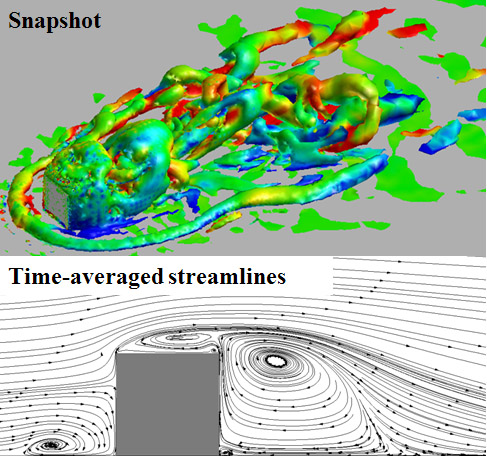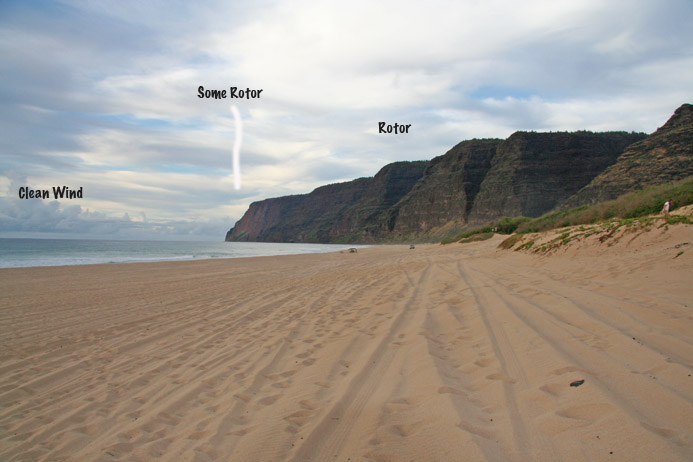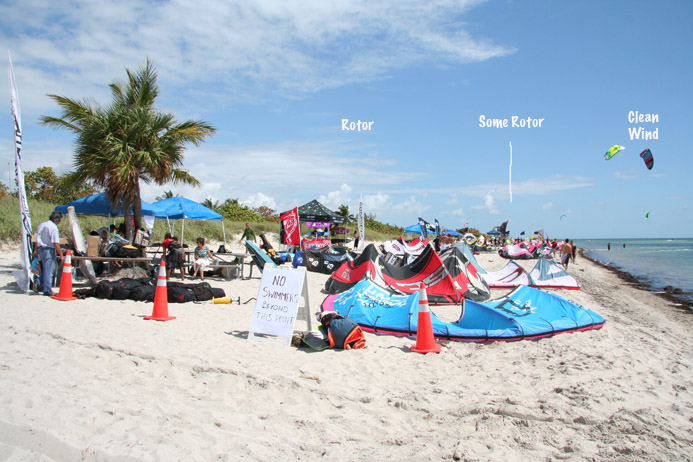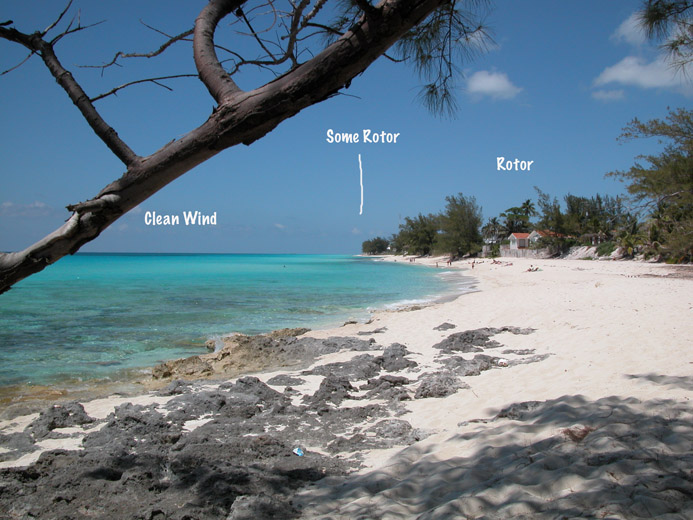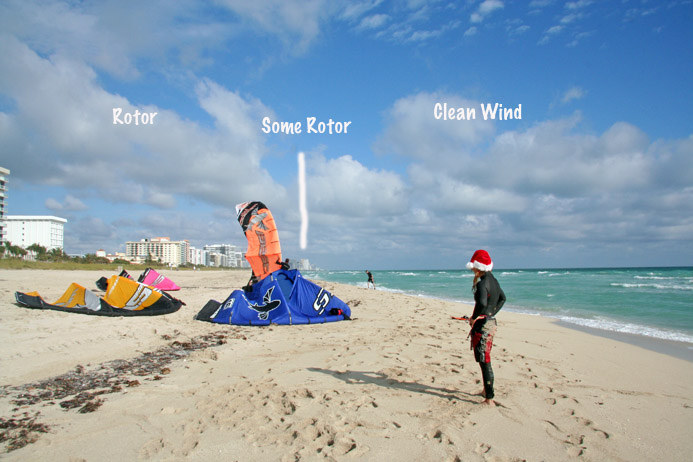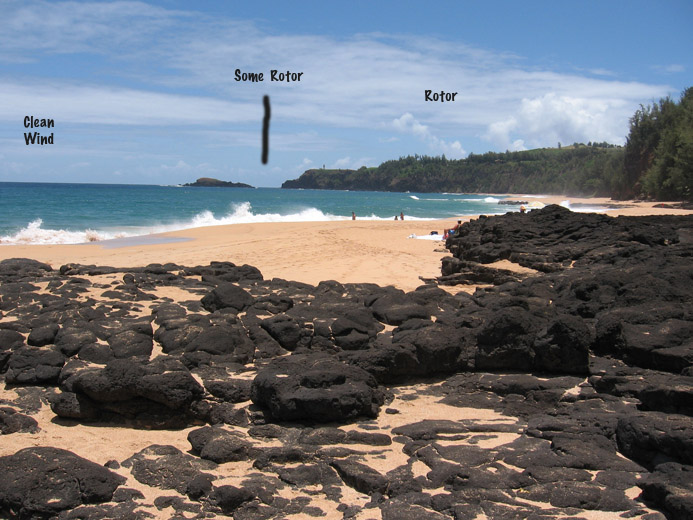To some degree it is what you are skilled in and used to within limits. In extreme cases it can be a bear for almost anyone. Recently, there have been some fatalities and near fatal accidents caused by rotor. Some were well experienced kiters and all were using flat kites with substantial depowering capacity.
It all comes down to LOCATION. If the wind is passing over nearby land before it reaches you, there can be problems. The kite may surge up in gusts, stall and fall like a rock in lulls and you might get yarded in a successive gust. It happens, all too often over the years. If you can move to an area free of rotor, do it. If not, maybe it is a good day to pass on riding. Riders choice, know what to look for and choose well.
Some examples ...
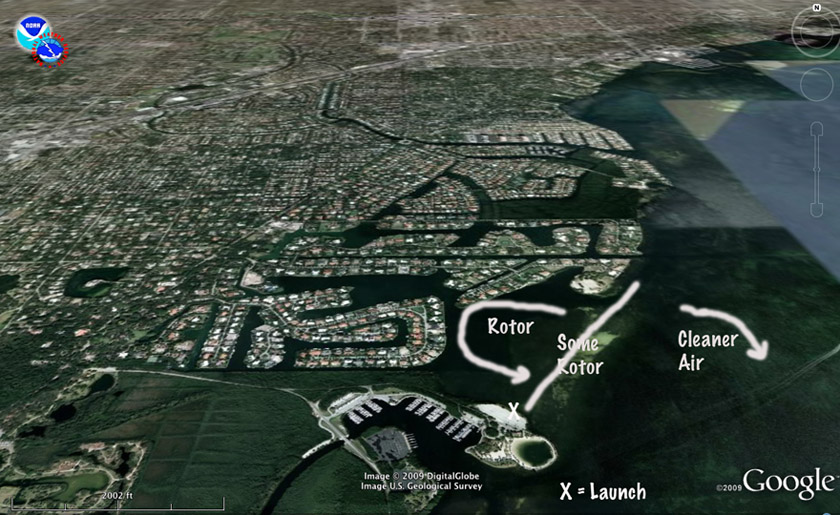
Winds around and to the left or west of the line are frequently rotored. They can have substantial gusts and lulls. The land and cover are fairly low, residential housing. Still, they are high enough to significantly disturb the wind. Kiters have been severely injured here as a result, one within the last month.
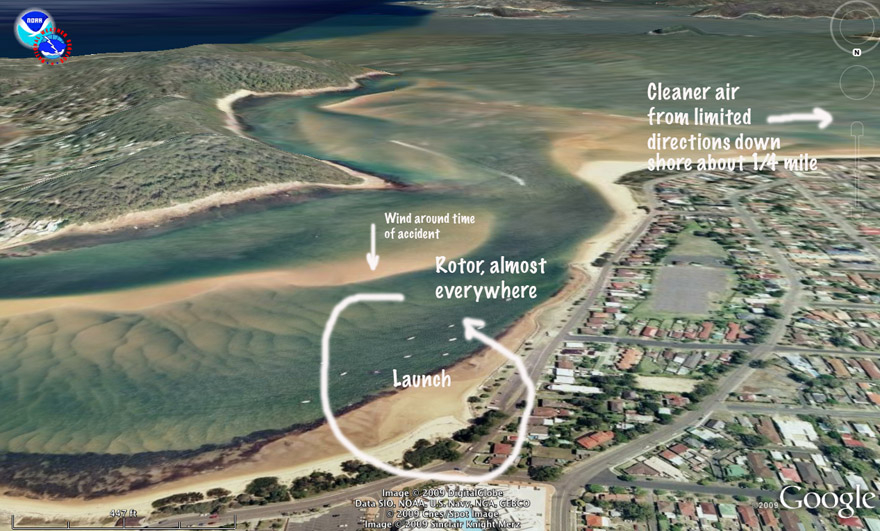
This was the scene of a particularly severe lofting. With the land mass to the south rising a few hundred feet off the water and land in most other directions, rotor is common here from most directions. Just a 1/4 mile to the west, there is an area without rotor from some wind directions at least. For kiting, for most winds, this launch is a poor choice.
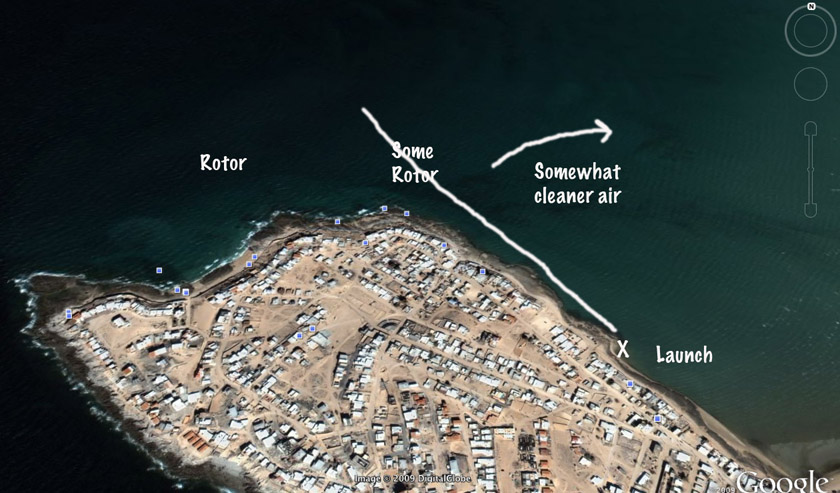
This is the scene of a recent severe lofting. The land rises dozens of feet above the water and with low houses creates enough rotor to dangerously disturb the wind.
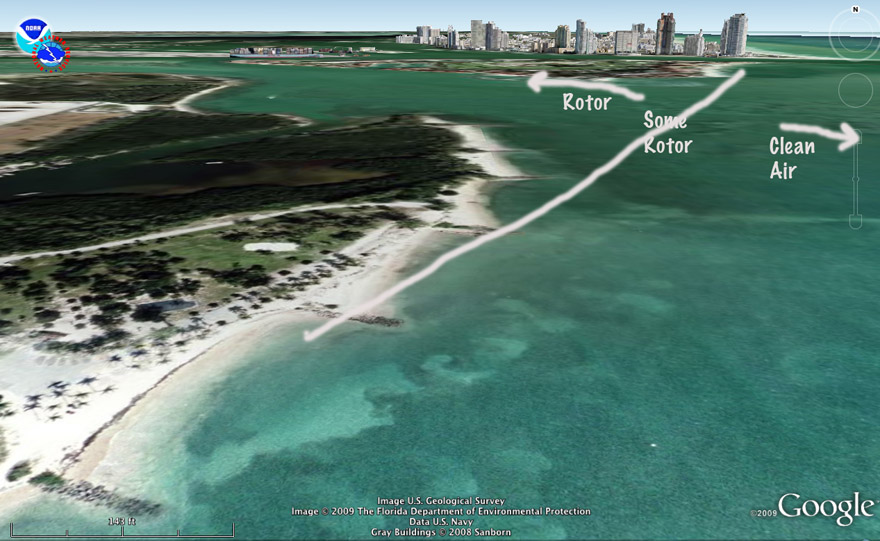
Not aware of any recent accidents at this location, historically, maybe. This is a more obvious cause of rotor, large buildings upwind. They could just as easily be a set of dunes, hills, mountains or even a high tree line.
Beyond that, there are some famous cases of rotor winds like Mistrals in the Med. A number of messed up kiters in those winds as well, often enough in riders lacking sufficient experience.
So, avoid offshore or side off winds with turbulent conditions. Pick a good location for conditions. If it is close to side shore but still turbulent be extra cautious, i.e. avoid flying your kite over head on land it may be better to keep it arched towards/over the water, be ready to sheet out and deal with stalls, etc.. Here's a good point, rotored areas may LACK significant waves making it easier to kite, do tricks, etc.. The wind on the other hand can be too unstable despite the wave conditions.
Pick good locations.
FKA, Inc.
transcribed by:
Rick Iossi






